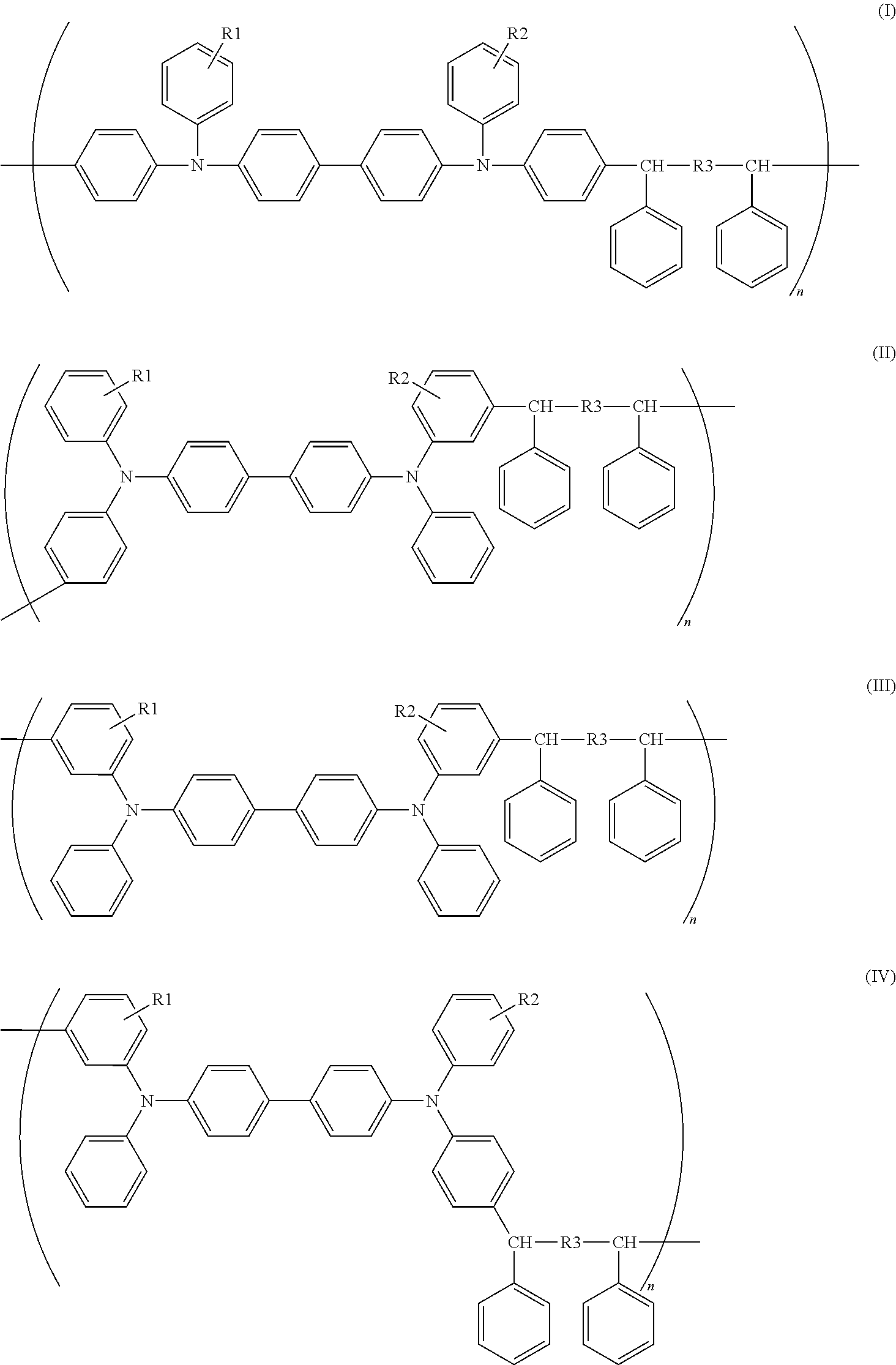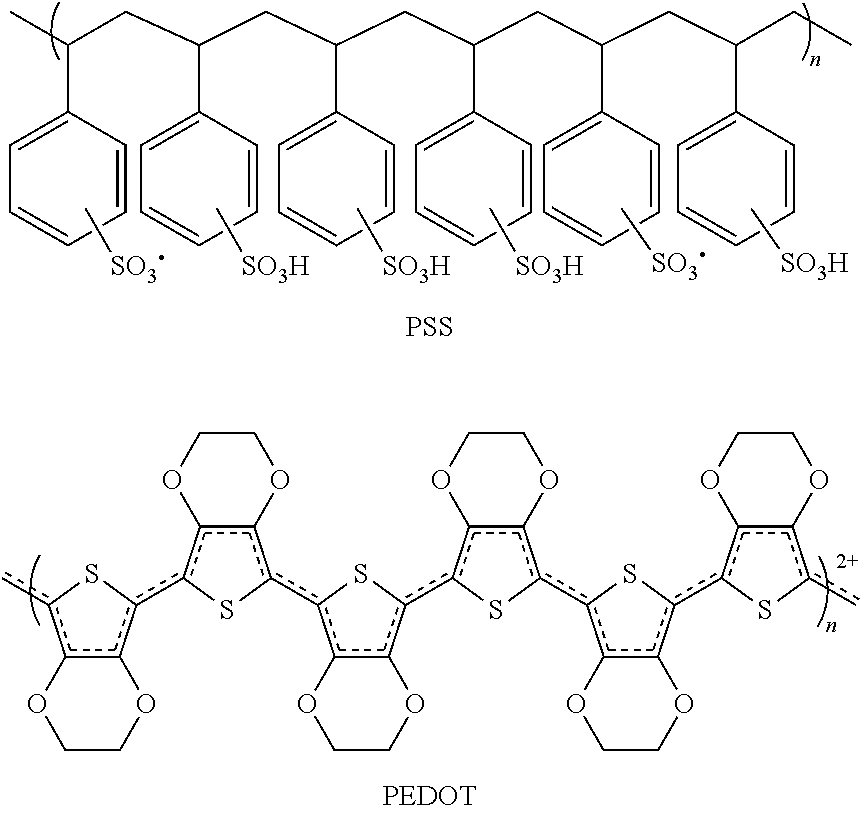Stable electrochromic module
a technology of electrochromic modules and modules, applied in non-linear optics, instruments, optics, etc., can solve the problems of uncontrollable separation processes, color contrast and lifetime problems, and unfavorable color contrast and lifetime effects of ec systems, so as to achieve low cost, low cost, and low cost
- Summary
- Abstract
- Description
- Claims
- Application Information
AI Technical Summary
Benefits of technology
Problems solved by technology
Method used
Image
Examples
example 1
[0055]A toluene solution containing 1.5 percent by mass of polymer, prepared by polycondensation of 1,4-bis(phenylhydroxymethyl)benzene and N,N′-bis(4-methylphenyl)-N,N′-diphenylbenzidine is applied to an FTO glass (i.e. glass equipped with an electrically conductive coating composed of fluorine-doped tin oxide) by means of a spin-coater, forming a homogeneous film of thickness about 500 nm (after drying). This is envisaged as the working electrode (WE) in the EC module. An ethanolic solution containing 5% by mass of water, 0.2 mol / l of ammonium cerium(IV) nitrate (NH4)2Ce(NO3)3 and 0.2 mol / l of tetraisopropyl orthotitanate (Ti(o-propyl)4) is applied to the other FTO glass by means of a spin-coater in a thin layer, and dried at 150° C. This is repeated three times and the whole assembly is finally heated at 500° C., forming a CeO2—TiO2 mixed oxide. This is then used in the EC modules as the transparent counterelectrode (CE). Two coated FTO glasses (WE and CE) are then combined to gi...
example 2
[0058]A toluene solution containing 1.5% by mass of polymer prepared by polycondensation of 1,4-bis(phenylhydroxymethyl)benzene and N,N′-bis(4-methylphenyl)-N,N′-diphenylbenzidine was applied to an ITO-film (i.e. a film coated with an electrically conductive coating composed of indium-doped tin oxide) by means of a spin coater, forming a homogeneous film having a thickness of about 500 nm (after drying). This is referred to as the working electrode (WE) in the EC-module. A dispersion of poly-3,4-ethylenedioxy-thiophene-poly(styrene sulfonate) (PEDOT-PSS) (CLEVIOS® PH from Heraeus Deutschland GmbH & Co. KG) is applied to a second ITO-film by means of a spin-coater in a thin layer, and dried at 150° C. The coated second ITO-film was then used in EC-modules as the transparent counter electrode (CE). The two coated ITO-films (WE and CE) were then combined to give the EC-module by means of a heat-sealing film. The EC-module was finally filled in a glovebox with polymer electrolyte (PVDF-...
PUM
| Property | Measurement | Unit |
|---|---|---|
| glass transition temperature Tg | aaaaa | aaaaa |
| thickness | aaaaa | aaaaa |
| wavelength | aaaaa | aaaaa |
Abstract
Description
Claims
Application Information
 Login to View More
Login to View More - R&D
- Intellectual Property
- Life Sciences
- Materials
- Tech Scout
- Unparalleled Data Quality
- Higher Quality Content
- 60% Fewer Hallucinations
Browse by: Latest US Patents, China's latest patents, Technical Efficacy Thesaurus, Application Domain, Technology Topic, Popular Technical Reports.
© 2025 PatSnap. All rights reserved.Legal|Privacy policy|Modern Slavery Act Transparency Statement|Sitemap|About US| Contact US: help@patsnap.com



